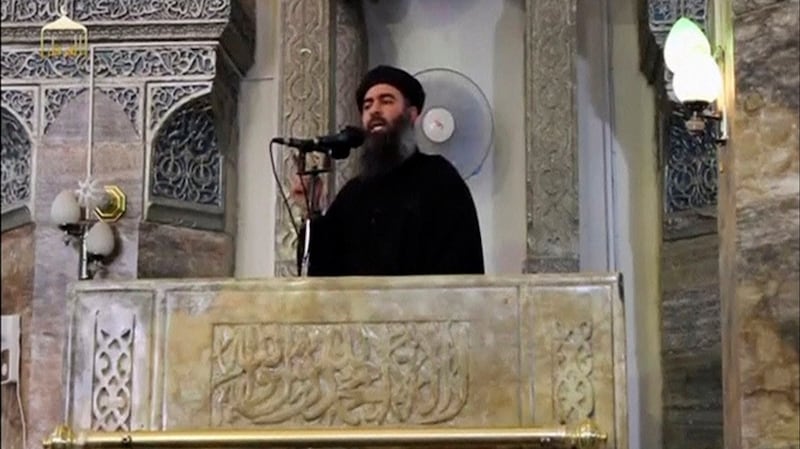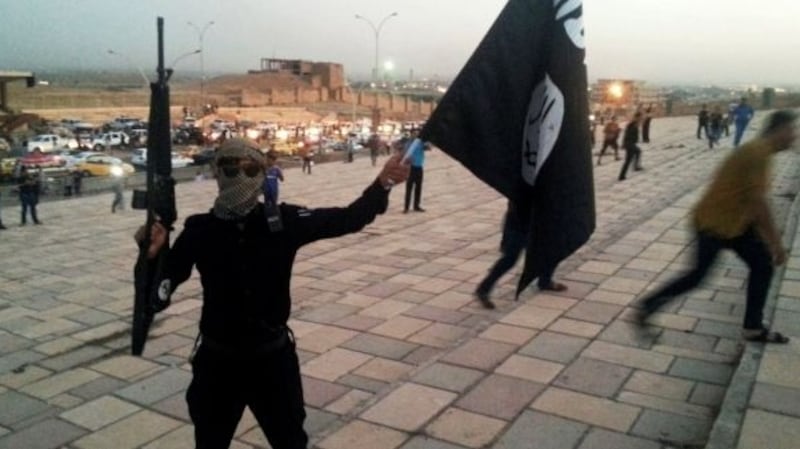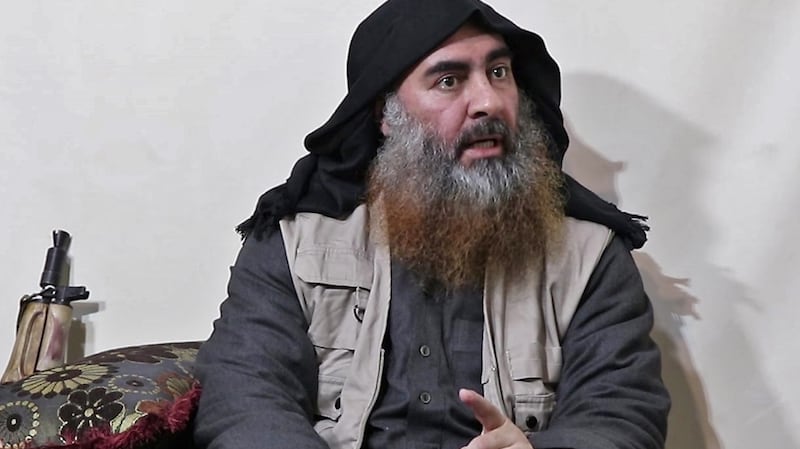The reappearance of Islamic State founder Abu Bakr al-Baghdadi in a video released on Monday was undoubtedly timed to demonstrate he has survived the disintegration of his territorial caliphate and remains "commander of the faithful".
By recording his second-ever video at this time, the shadowy Iraqi also seeks to re-energise his troops and demonstrate to his chief rival, the al-Qaeda-linked group Hay'at Tahrir al-Sham, which controls Syria's northwest Idlib province, that Islamic State (also known as Isis) remains the leading global jihadi movement despite its losses.

The only other time he has appeared in a video was in July 2014 when, standing in the pulpit of al-Nouri Mosque in Mosul, a triumphant, younger, leaner Baghdadi proclaimed himself ruler of a 21st century caliphate the size of Britain.
Since then he and his troops have faced one defeat after another while, paradoxically, his cultish movement has gained adherents around the world. He claimed "provinces" in Egyptian Sinai, Yemen, Somalia, Mali, Turkey and elsewhere.
Pernicious organisation
Continuous recruitment makes Islamic State one of the most pernicious terrorist organisations in history, and nearly impossible to track and uproot. In the video, he says Islamic State would continue a “battle of attrition” against Crusader enemies and vowed “the jihad will continue until Judgment Day”.
Baghdadi is a survivor. During campaigns against Islamic State in Iraq and Syria, he was reported to have been gravely wounded or killed by US and Russian bombs. Recently his guards fought off a coup attempt by foreign elements. Washington's $25 million (€22.3 million) bounty for information leading to his capture has failed to produce results.

While the Easter suicide bombings which killed 253 people in Sri Lanka were not mentioned in the video, which was apparently recorded earlier, in added audio he said those attacks were in revenge for the deaths of his fighters in the Syrian town of Baghouz, the last scrap of territory held by Islamic State.
After praising the attackers, who pledged fealty to the terror group, Baghdadi did not claim a role in the operation, indicating the perpetrators were independents. This model has already made his menacing followers all the more difficult to apprehend.
Marginalised and persecuted
Baghdadi is said to be hiding in Iraq’s western Anbar province, where he is likely to find refuge with fellow Sunni Muslims who have been marginalised and persecuted by the Shia fundamentalist government, and attacked by Shia militias.
Ibrahim Awad Ibrahim al-Badri, who adopted the nom de guerre Abu Bakr al-Baghdadi, was born in the Iraqi city of Samarra in 1971, studied Islamic law at university, and joined a jihadi resistance group following the 2003 US occupation of Iraq.

While jailed by US forces, he and fellow prisoners formed cells and planned operations to be mounted after their release. In May 2010, he was appointed head of Islamic State In Iraq, which carried out dozens of attacks on civilians, police and troops.
In 2013, Baghdadi rebranded the group as Islamic State of Iraq and Syria, and deployed across the border in Syria, where it seized the central city of Raqqa before returning to Iraq and establishing his now defunct caliphate.












